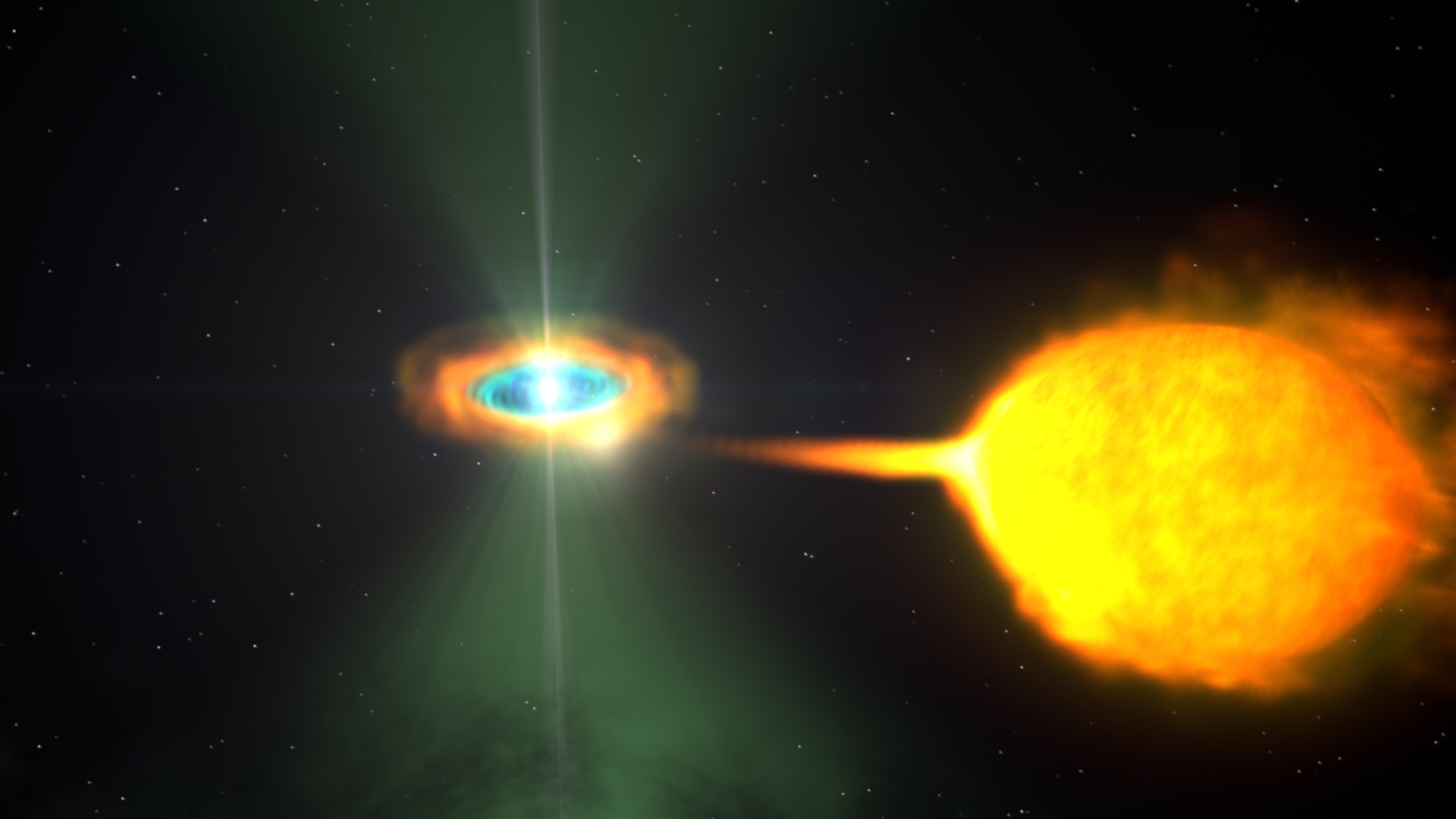Millisecond Pulsar with Magnetic Field Structure
A pulsar is a rapidly rotating neutron star that emits pulses of radiation (such as X-rays and radio waves) at regular intervals. A millisecond pulsar is one with a rotational period between 1 and 10 milliseconds, or from 60,000 to 6,000 revolutions per minute. Pulsars form in supernova explosions, but even newborn pulsars don’t spin at millisecond speeds, and they gradually slow down with age. If, however, a pulsar is a member of a binary system with a normal star, gas transferred from the companion can spin up an old, slow pulsar to the millisecond range.
This animation zooms into a neutron star and its accretion disk to show a millisecond pulsar in close-up.
This animation shows the top view of a Milisecond Pulsar.
This animation zooms into a neutron star and its accretion disk to show a millisecond pulsar in close-up and has a starry background.
This animation shows a what a neutron star experiencing a starquake might look like. Starquakes crack the surface crust of the star and briefly increase its spin rate.
Credits
Please give credit for this item to:
NASA
-
Animator
- Dana Berry (Skyworks Digital)
-
Writer
- Michael McClare (HTSI)
Series
This page can be found in the following series:Release date
This page was originally published on Tuesday, July 3, 2007.
This page was last updated on Wednesday, May 3, 2023 at 1:55 PM EDT.
